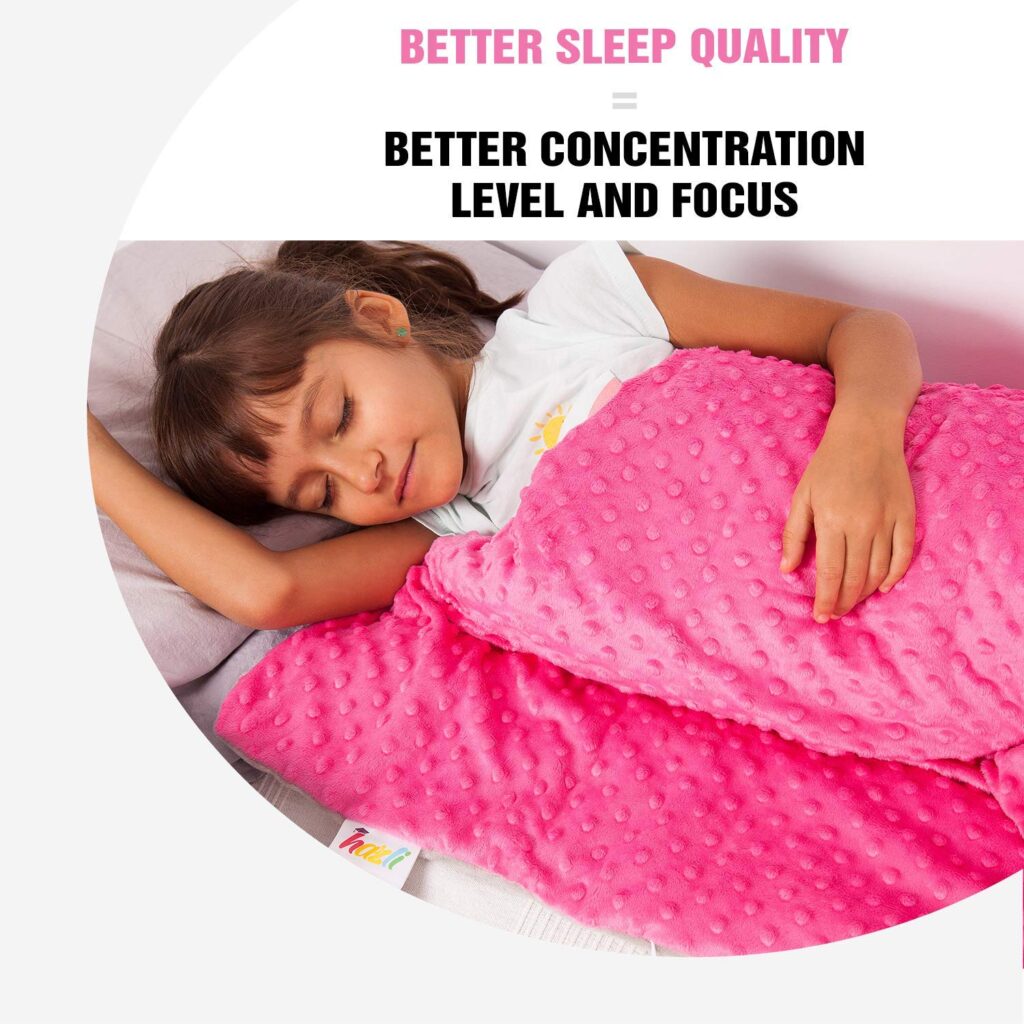Weighted blankets have been an ideal tool that therapists have recommended for years to fight autism. One particular factor of why these blankets are so highly successful is the way they are made – sewn with delicate pockets filled with polypropylene pellets, allowing the blanket to give firm and even pressure to the little body. This is a very important tool for rest time in every therapy for kids with autism, and it’s also useful when easing the symptoms of ADHD and other sensory disorders or conditions.
Table of Contents
How do these weighted blankets work?
The process is simple: pockets filled with glass beads are sewn inside the blanket, making it evenly heavy. The amount of glass beads determines the weight of the blanket. Everything sits nicely in a cover so soft even adults will want to snug under it. Take care when washing: you can only wash the removable cover; otherwise, the beads might move inside their pockets.

Choosing the right size and weight of the blanket is key because your child should feel like their body is being completely embraced and should provide a calming and relaxed sensation.
Find weighted blankets for kids in different colors and sizes.
Are the weighted blankets ideal for kids with autism?

In the past years, we see a trend with specialists talking more and more about weighted blankets. Therapists and doctors recommend them to ease autism symptoms and other conditions, especially in kids, reducing the number of meltdowns as well as the levels of anxiety. Serotonin can also be regulated by these amazing products helping kids to gain better control over their bodies, sleeping better and longer and being more relaxed and focused on the following day.
Sleeping with weighted blankets, a totally peaceful experience.
Serotonin is a hormone associated with happiness and well being. It also helps reduce depression, regulates anxiety, heals wounds and maintains good bone health. We might say it’s a really important chemical for our little ones, affected or not by any condition. If they sleep well, the serotonin level will go up, if not it will go down. Can you see the link? A weighted blanket help kids go to sleep and stay in a deep sleep state for longer, thus making them happier and healthier in the process.
Focus improvements and reduced meltdowns
Overwhelming situations can lead to a meltdown in kids with autism, and it’s not bad behavior at all, it’s a response to an avalanche of stressful events. When using a weighted blanket kids may find it easier to regain control over themselves, and once they got control they can focus in their thoughts and actions in a better way, they perform better at school and can have a friendlier personality in society.
Weighted blanket with pink cover on Amazon.
Conclusions
Many benefits come with a weighted blanket, mostly helping with issues associated with sleeping and sensory disorders. Will a weighted blanket work for your child? There is only one sure way to know: try one and see for yourself. As a guideline, the blanket should be roughly 10% of the child’s weight, but we have seen reports where they feel better with a lighter or heavier blanket than this standard 10%. The best way is to try for yourself and find the sweet spot.
Studies show that more than 80% that tried a weighted blanket for their child found it to work in one way or another. A good majority said it worked miracles, and those who did not see an obvious improvement in sleep time or quality said that at least the soft fabric makes their children happy to use the blanket at night time, day naps or to relax under it while playing. We really don’t see any downside in using weighted blankets.













